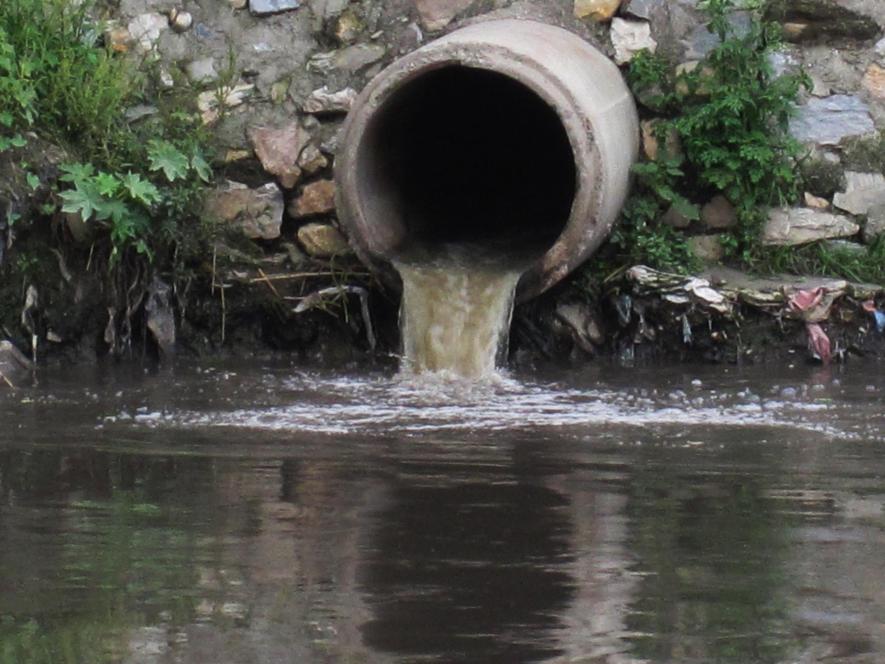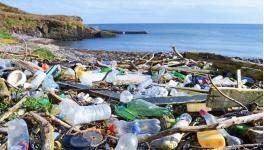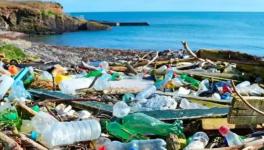Coastal Sewage Pollution: Few Clusters Threaten Aquatic Ecosystems

Image Source: Wikimedia Commons.
Sewage from everywhere in the world makes its way from household pipes, into rivers, and finally gushes into its oceans. Aquatic ecosystems are threatened by this process along with human health. It is well known a fact that there are certain spots that are major sources of coastal pollution. Now, a group of researchers from University of California, Santa Barbara has come out with a report with an assessment of the global distribution of the coastal sewage pollution. The research has been published recently in the journal of PLOS One on November 10.
Nearly 1,35,000 sites around the world flush human waste water into the oceans. The new study found that among these, only 25 locations contribute to waste of over half of the pollution into the oceans. The study, led by Cascade Tuholske, a geographer, took up the task of calculating amounts of fecal pathogens and nitrogen flushed into the oceans by means of human wastewater. Notably, the fecal pathogen and nitrogen in sewage are responsible for algal blooms (overgrowth of microscopic algae or algae-like bacteria in marine or freshwater bodies) and can also create dead zones, deprived of oxygen.
Experts believe that the findings of the study can be helpful in international collaborations and policy formulations in order to achieve effective sewage treatment strategies for heavily contaminated areas. Tuholske commented that many of the scientists studying the human impacts on coastal areas are focused on agricultural runoff (The water flowing from farming lands) as fertilizers that get carried away to the sea carry massive amounts of nutrients and pathogens which can potentially harm the marine ecosystems.
Human sewage has received less interest from the research community so far. Explaining a possible reason for it, Joleah Lamb, a marine scientist at the University of California, Irvine said in a statement—“Part of the reason may be that, unlike trash or oil spills, sewage can be invisible in the water. I’ve been taken to beaches that look beautiful and clean. But then we start testing the water, and there are significant levels of human pathogens in the water.”
Sewage treatment has multiple ways. For example, wastewater treatment facilities can filter out pathogens thoroughly, but they can be less effective in removing nitrogen. These facilities are also costly. On the other hand, septic systems, which are cheaper, can effectively remove nitrogen, but are not so effective in preventing pathogens from entering the environment.
Tuholkse commented on it as— “Identifying places, where sewage-borne nitrogen and pathogens are separate or combined problems, can help policymakers identify the most effective solutions.”
In their work, Tuholske and his colleagues analysed demographic data of urban and rural areas around the world. They also studied the access these communities have to different types of wastewater treatments. Along with these, the team also looked into national statistics of protein consumption; this helped them in approximating the amount of nitrogen people’s waste would contain.
This data analysis was used by the researchers to build a global grid reflecting where were the nitrogen and pathogens in the sewage coming from along with the treatment ways adopted for the wastewater.
After this, the team combined the sewage grid with the maps of watersheds (the areas that drain into a large water body such as a river or ocean) along with locations of coral reefs and seagrass beds. The reefs and the seagrass beds are very sensitive to pollution.
The team found an alarming fact—sewage draining to oceans contains 40% more nitrogen as global agriculture runoff causes. They also found that nitrogen from human sewage reached 58% of the coral reefs and 88% of the seagrass beds. Importantly, both of these ecosystems are important habitats of wildlife that can play a helpful role in carbon sequestration.
The study also highlighted that sewage pollution is concentrated in certain places. Half of the watersheds they analysed were found to contain no sewage nitrogen or pathogen. There are only 25 watersheds spread along nearly all of the continents and different countries that contribute over 46% of the sewage nitrogen. The same number of watersheds were found to contribute to about 51% of the pathogens into the ocean.
The study found the Yangtze river watershed in China as the top source of sewage nitrogen. Along with this, the Nile river in Africa and Mississippi in the US, Danube river of Europe and Parana river of Argentina contributed around 11% to the global amount.
The researchers however found that nitrogen and pathogens were not always correlated to sewage pollution. They found that the Brahmaputra river in India flushes a large number of pathogens, however, its nitrogen contribution was found less in comparison to the Yangtze river.
The research bears importance from the perspective of pinpointing the areas of having nitrogen and pathogen and this can help sanitation specialists, wastewater managers to work together in developing ways that can help mitigate nitrogen and pathogens entering the environment.
Get the latest reports & analysis with people's perspective on Protests, movements & deep analytical videos, discussions of the current affairs in your Telegram app. Subscribe to NewsClick's Telegram channel & get Real-Time updates on stories, as they get published on our website.
















